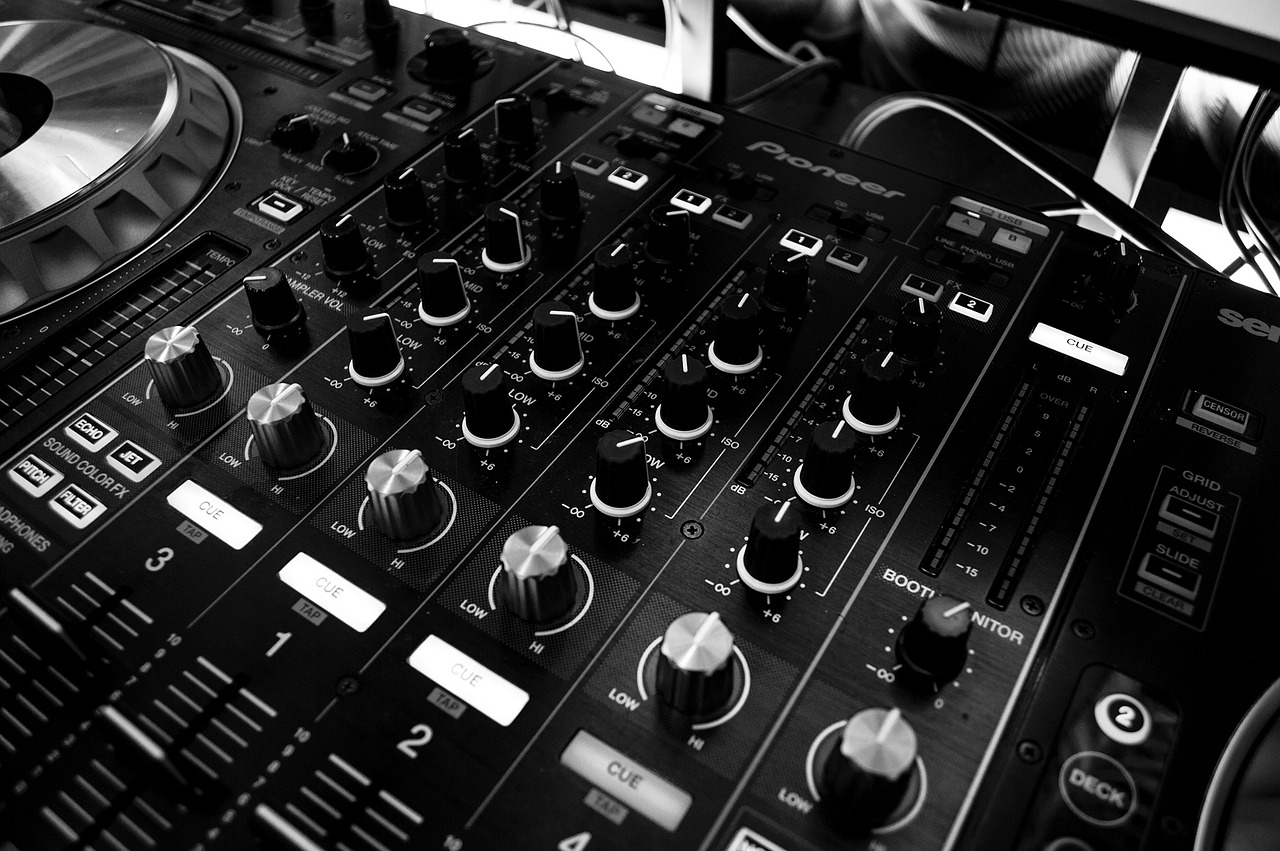In an era defined by boundless possibilities, music production software has emerged as a pivotal force, seamlessly blending artistry with technology. Musicians and producers now wield a digital arsenal capable of transforming mere concepts into symphonic masterpieces. This article embarks on a journey through the realm of music production software, delving into its multifaceted landscape, and unveiling the profound potential it holds for both seasoned virtuosos and budding talents alike.
The Metamorphosis of Music Production Software
The journey of music production software, commonly referred to as Digital Audio Workstations (DAWs), has been nothing short of transformative. In the bygone era, music production was largely beholden to analog equipment, confining creativity within physical confines. Yet, with the advent of DAWs, the paradigm shifted irrevocably.
A Panorama of Choices
The contemporary musician is spoilt for choice when it comes to music production software. An expansive spectrum of options caters to individuals with diverse needs and aspirations. From freely accessible open-source software such as Audacity to industry giants like Ableton Live and Pro Tools, the landscape is teeming with possibilities.
The Unleashing of Creative Boundaries

Perhaps one of the most remarkable facets of music production software is its capacity to liberate creativity. Musicians can now experiment with an extensive palette of sounds, effects, and virtual instruments, enabling them to push the boundaries of musical expression. The user-friendly interfaces empower artists to shape their ideas with effortless precision.
The Virtuosity of Virtual Instruments
Virtual instruments represent a cornerstone of modern music production software. These digital marvels replicate the rich timbres and textures of real-world instruments with astonishing fidelity, offering musicians an expansive palette to craft their compositions. Here’s a breakdown of the virtuosity of virtual instruments:
A Variety of Virtual Instruments:
- Virtual synthesizers: Software synthesizers recreate the sounds of analog synthesizers, offering a vast array of presets and sound sculpting options.
- Sample-based instruments: These instruments use recorded samples of real-world instruments, providing an authentic sound, from grand pianos to orchestral strings.
- Drum machines: Virtual drum machines emulate classic hardware drum machines, allowing users to create intricate beats and rhythms.
Endless Sound Possibilities:
- Virtual instruments can produce sounds that are physically impossible with traditional instruments, expanding creative horizons and leading to the emergence of new genres and sonic landscapes.
- Users can customize parameters such as attack, decay, sustain, and release to shape the character of each instrument, achieving unique and personalized sounds.
Realistic Performance Options:
- Many virtual instruments offer features like key velocity sensitivity and aftertouch, making it possible to mimic the nuances of playing acoustic instruments.
- Expression controls such as modulation wheels, pitch bend, and breath controllers add realism to performances.
The Harmonious Symphony of MIDI

MIDI (Musical Instrument Digital Interface) functionality stands as a linchpin in the realm of music production software. It equips musicians with the ability to craft intricate compositions and manipulate sound with surgical precision. The power to program MIDI sequences unravels a cosmos of possibilities for weaving intricate melodies and harmonies.
The Artistry of Mixing and Mastering
Mixing and mastering, pivotal phases in music production, benefit immensely from the prowess of software. DAWs provide an arsenal of tools for fine-tuning levels, applying effects, and achieving the pristine sound quality coveted by professionals. The pliability of software ensures that artists can iterate and refine until their sonic dreams are fully realized.
Harmonizing in the Digital Sphere
In today’s interconnected global village, collaboration lies at the heart of music production. Software facilitates seamless cooperation among musicians, breaking down geographical barriers. Artists can share project files, collaborate in real time, and even engage in virtual jam sessions courtesy of cloud-based features.
Overcoming Limitations Through Software Alchemy
Music production software empowers musicians to transcend the limitations of physical instruments and traditional recording methods. Software synthesizers, for instance, birth sounds hitherto unimaginable with physical instruments, paving the way for entirely new genres and sonic vistas.
Precision and Artistry Through Automation
Automation, a resplendent feature of music production software, bequeaths artists with unparalleled control over a myriad of parameters – from volume and panning to the application of effects. This level of nuanced control remains an unattainable dream when working with analog equipment.
Presets and Sound Libraries: A Melodic Treasure Trove

To expedite the creative process, many music production software suites come embellished with extensive preset libraries. These presets serve as launchpads for artists, aiding them in their exploration of different musical soundscapes and styles. Moreover, users can broaden their auditory palette by acquiring or crafting custom sound libraries.
The Allure of Effects Plugins
Effects plugins are the secret sauce that transforms raw audio into captivating sonic experiences. These digital processors offer an array of sound-shaping possibilities, enhancing and elevating the quality of audio recordings. Here’s a closer look at the allure of effects plugins:
A Diverse Array of Effects:
- Reverb: Simulates the acoustic properties of different spaces, from small rooms to vast cathedrals, creating a sense of space and depth.
- Delay: Creates echoes and repeats of audio signals, adding dimension and rhythmic complexity to sounds.
- EQ (Equalization): Allows precise control over the frequency content of audio, enhancing clarity and tonal balance.
- Compression: Evens out the dynamic range of audio, making quiet parts louder and controlling peaks for a smoother sound.
- Distortion: Adds grit and harmonics to audio, from subtle warmth to aggressive overdrive.
- Modulation: Includes effects like chorus, flanger, and phaser, which impart movement and texture to sound.
Layering and Experimentation:
- Musicians can combine multiple effects in a chain, experimenting with different signal paths to achieve unique and complex sonic textures.
- Effects can be automated over time, allowing for evolving soundscapes within a composition.
Presets and Customization:
- Many effects plugins come with extensive preset libraries, offering a starting point for users to explore different sonic possibilities.
- Users can tweak parameters within each effect to tailor them to specific tracks or creative intentions, achieving a personalized sound.
Real-time Processing:
- Effects plugins can be applied in real-time during recording or performance, enabling artists to hear the impact of effects as they play or sing.
- Latency-free monitoring ensures that artists can maintain their creative flow without distracting delays.
- Incorporating virtual instruments and effects plugins into the music production process provides musicians with an extensive sonic toolkit, empowering them to craft unique and compelling musical experiences.
The Art of Mix Visualization
Mixing, an intricate art in itself, is significantly simplified by music production software. Visual representations of audio waveforms allow musicians to perceive how different elements of a mix interact, making it easier to diagnose and rectify issues. This visual feedback is a boon for both novices and professionals.
Affordable Accessibility for All
Perhaps one of the most significant advantages of music production software is its affordability. In the past, establishing a professional recording studio demanded substantial investments in equipment and physical space. Today, even aspiring musicians can access high-quality software at pocket-friendly prices.
An Inclusive Overture
Music production software contributes significantly to the inclusivity of the music industry. It empowers individuals with physical disabilities to embark on their musical journeys, dismantling barriers that might have otherwise hindered their artistic expression.
Never-ending Symphony of Innovation
The world of music production software is in perpetual motion, an ever-evolving tapestry of innovation. Developers continually release updates and new features to meet the ever-changing demands of the music industry. Musicians can look forward to a future where software continues to propel creative boundaries to hitherto unexplored territories.
Conclusion
In summation, music production software stands as the great equalizer in the realm of music creation. It presents an expansive range of possibilities, from virtual instruments and MIDI wizardry to sophisticated mixing and mastering tools. With software as their ally, musicians of all calibers can unshackle their creative spirits and craft music that resonates deeply with their audience. As technology continues to advance, the horizon of music production software beckons, promising an exciting future brimming with creative prospects.

